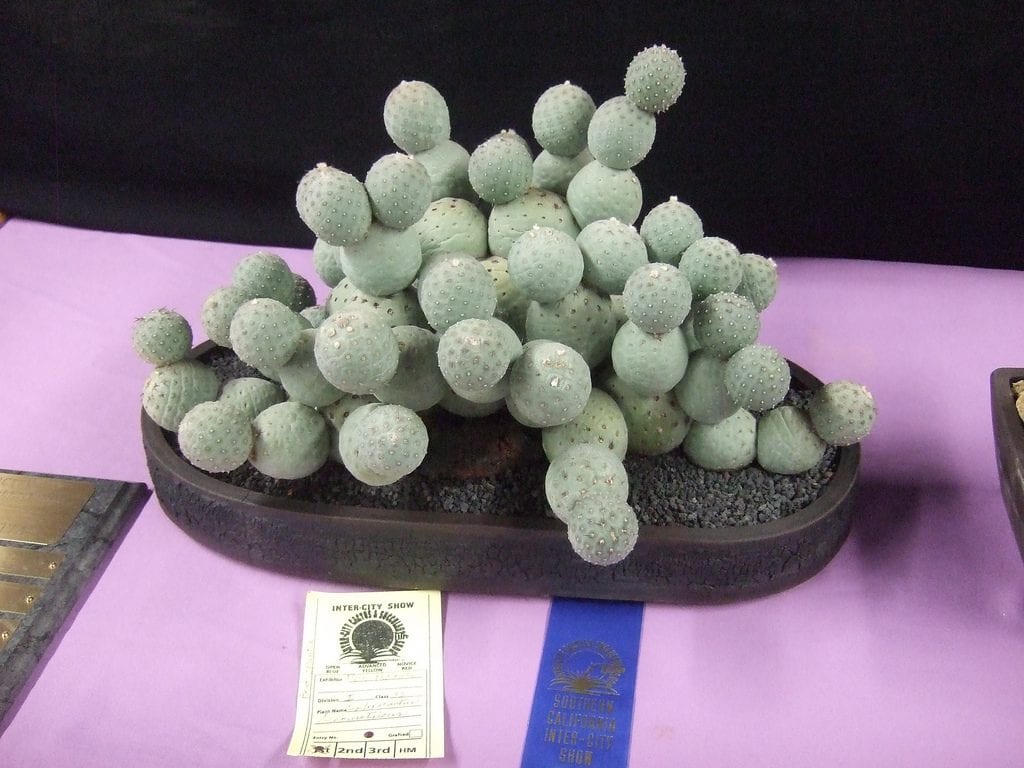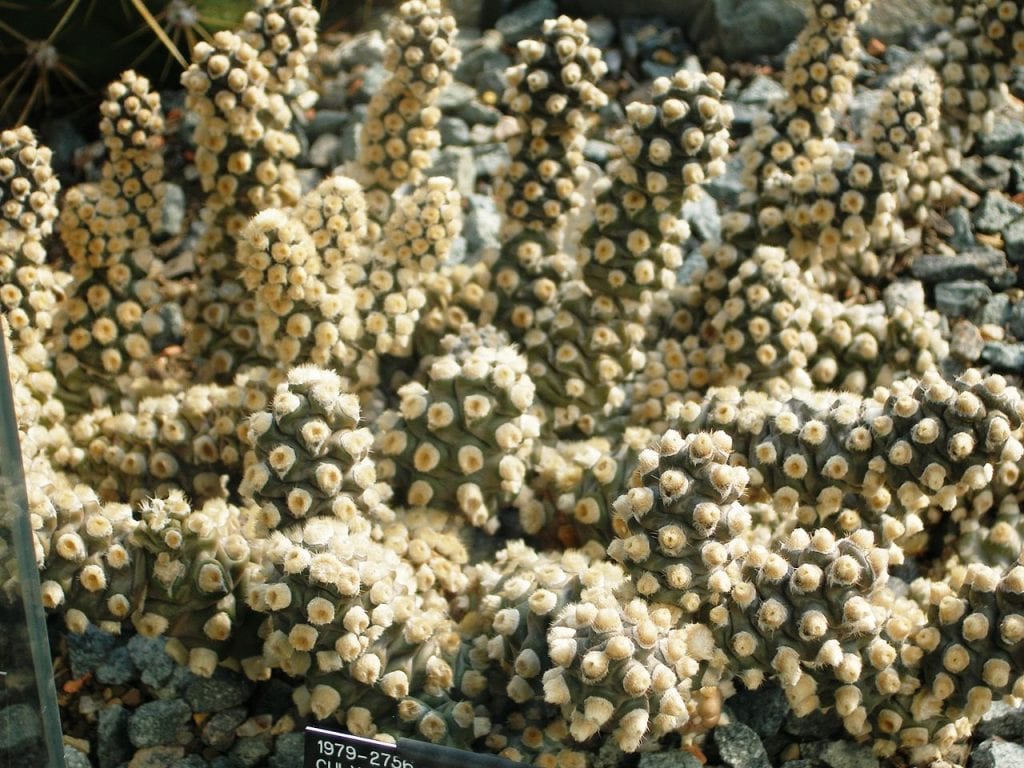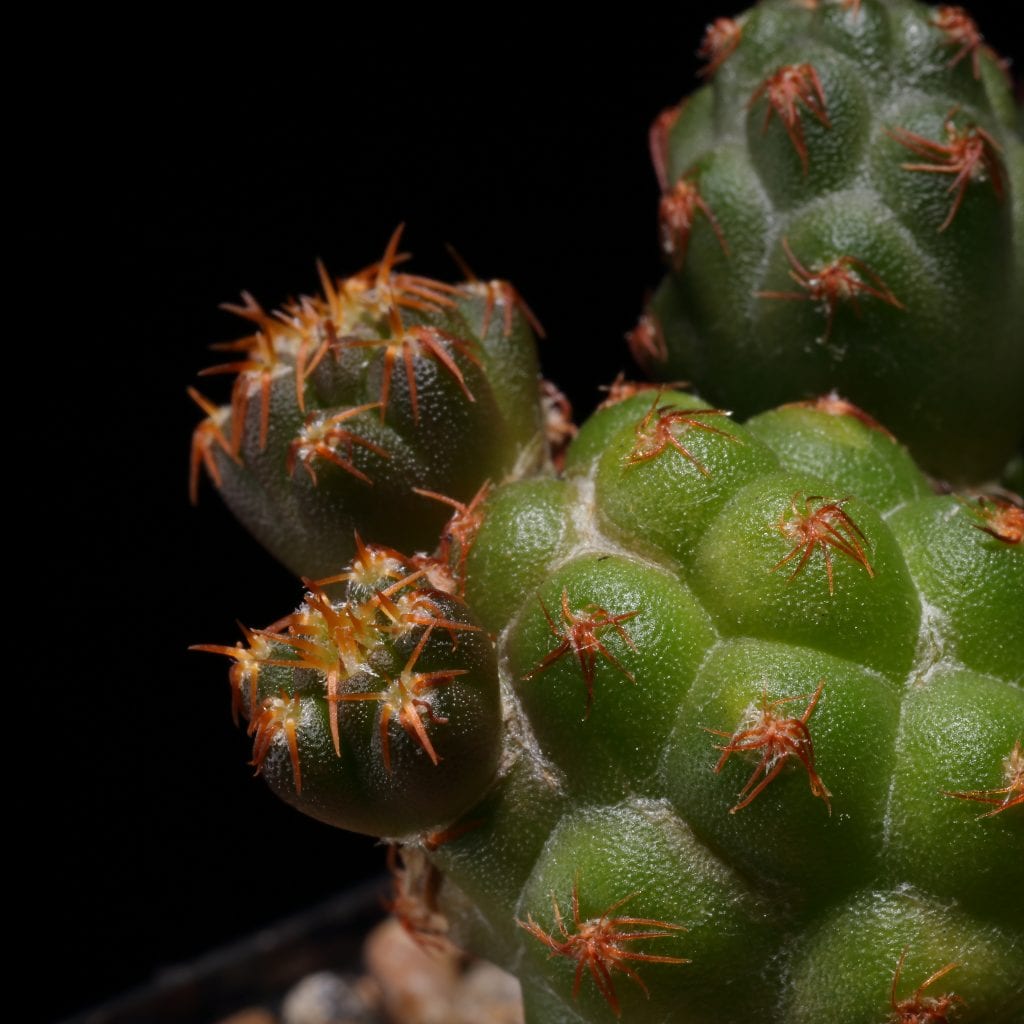
Tephrocactus geometricus
Collectible cacti are those that are not easily seen in nurseries. In fact, when you have decided to increase your »cactus family» with rare varieties, what they are going to recommend the most is that you look in online stores for those specimens that you like the most, because in stores and physical nurseries it is difficult for them to have those species that they attract your attention as they could be the ones of the genre tephrocactus.
Originally from Argentina, they are very curious plants, which adopt the most surprising shapes taking into account the type of plant beings they are. In addition, although it may seem otherwise, their care is very, very simple.

Tephrocactus molinensis
Normally we are used to seeing columnar or globular cacti with areolas visible but without exaggeration. Well then, Tephrocactus are shrub-shaped, with branched succulent stems that can reach a height of 1 meter. Although the genus comprises 73 described species, there are only 15 accepted, the following being the most common: T. articulatus, T. geometricus, T. halophilus y T. molinensis.
Its growth rate is medium-fast, and it can be grown in a pot throughout its life. Thus, it is an ideal cactus to decorate the terrace, or even the interior of the home if a lot of natural light enters.

Tephrocactus bonnieae
If we talk about its care, it is a cactus that will give us great satisfaction. If you dare to get one, follow our advice:
- Location: place it in an area where it will be exposed to direct light, if possible.
- Substratum: highly recommended to plant it in akadama or similar substrates (pomx, river sand). You can also mix black peat with perlite in equal parts.
- Irrigation: every time the substrate is dry. Waterlogging must be avoided.
- Subscriber: during spring and summer it must be paid with mineral fertilizers following the indications specified on the packaging.
- Transplant: every two years.
- Multiplication: by seeds or cuttings in spring-summer.
- Rusticity: supports up to -2ºC, but must be protected from hail.
Have you ever seen this cactus? What do you think?
Hello everyone, I ask for help, I try to find copao plants -eulychnia acida- since I have tried to germinate seeds and there is no way. I would be very grateful to anyone who gives me some information.
regards
Hello Jose Maria.
I recommend you look on ebay, and if you can't find it, on bidorbuy.co.za (it is something like the Ebay of South Africa).
A greeting.